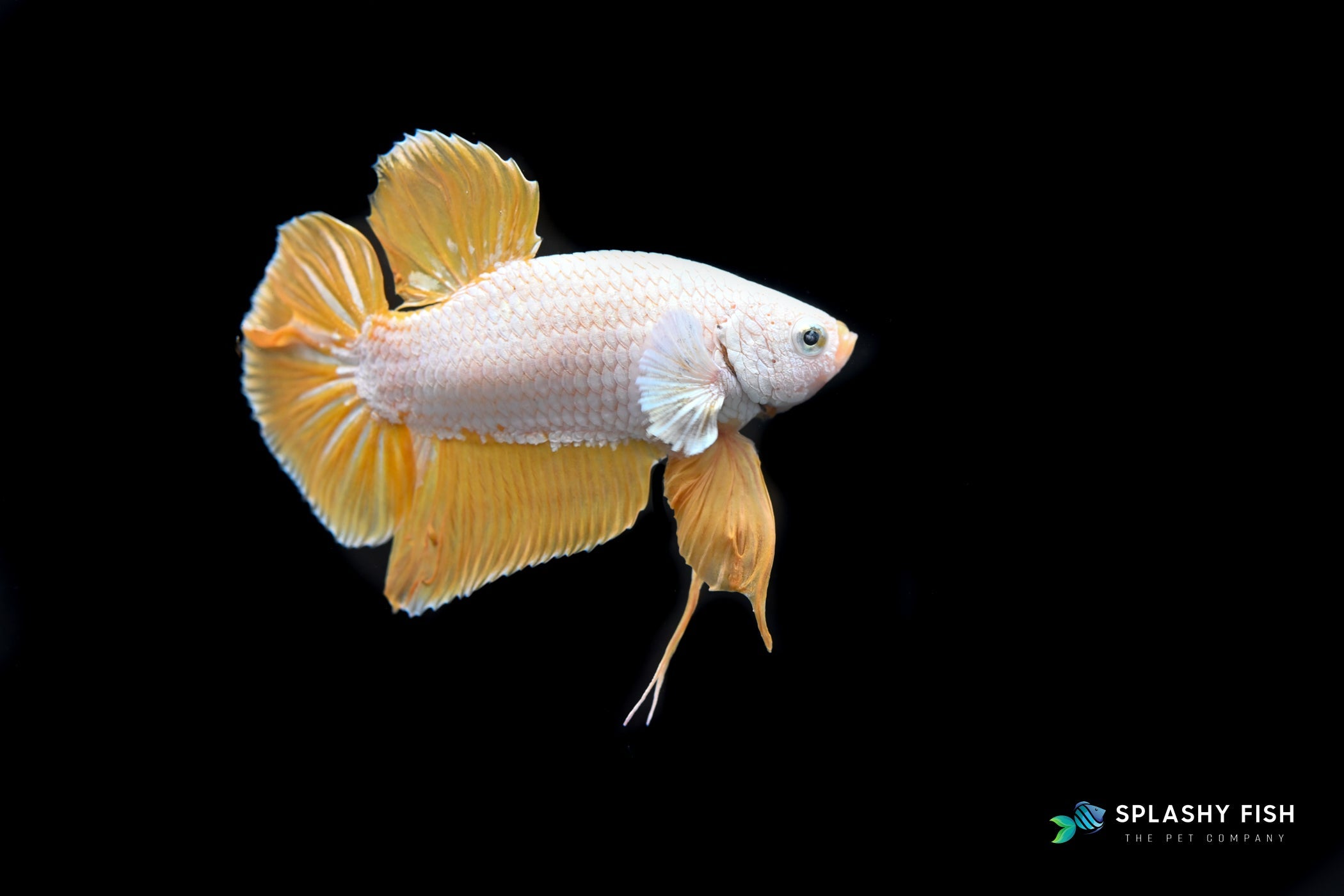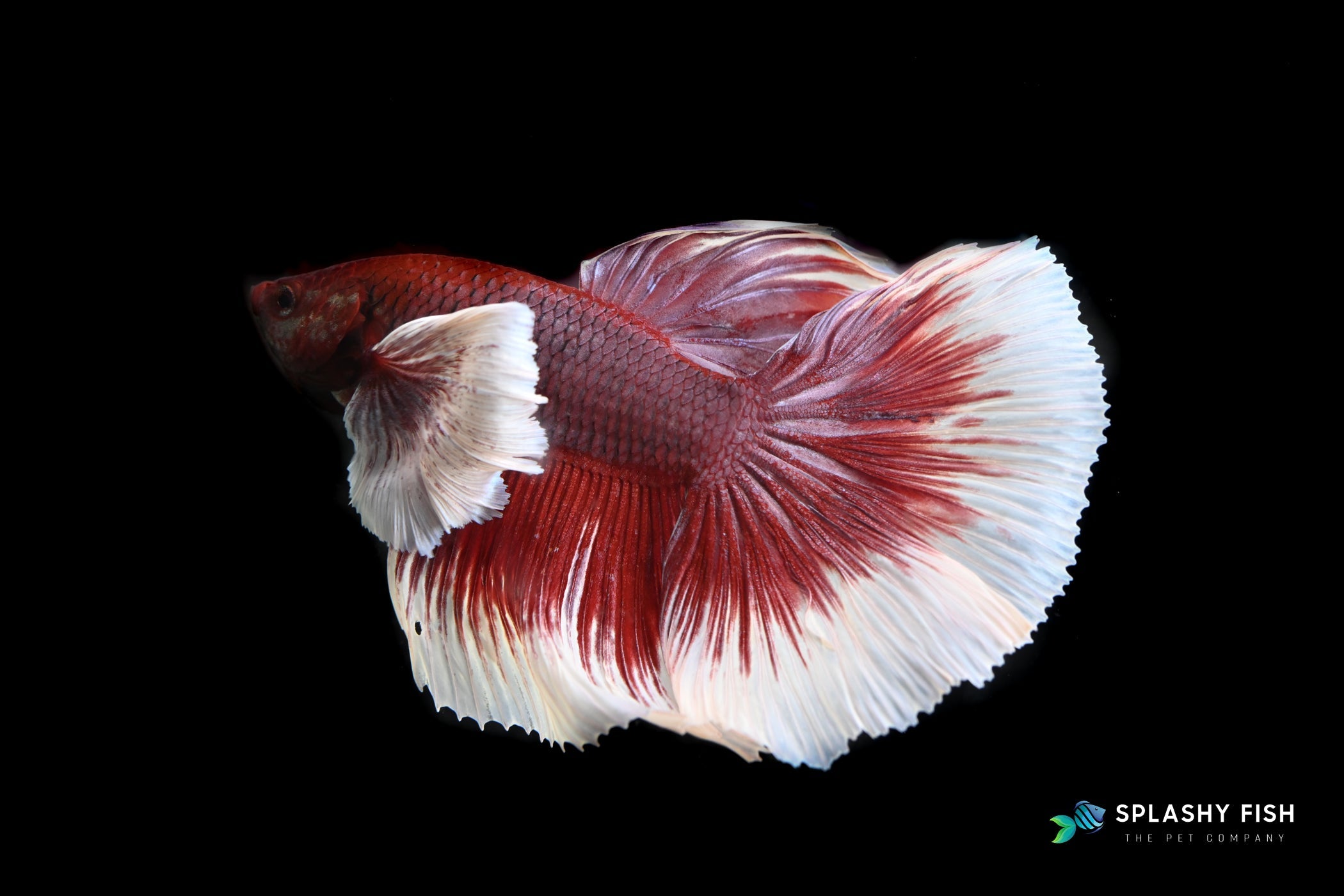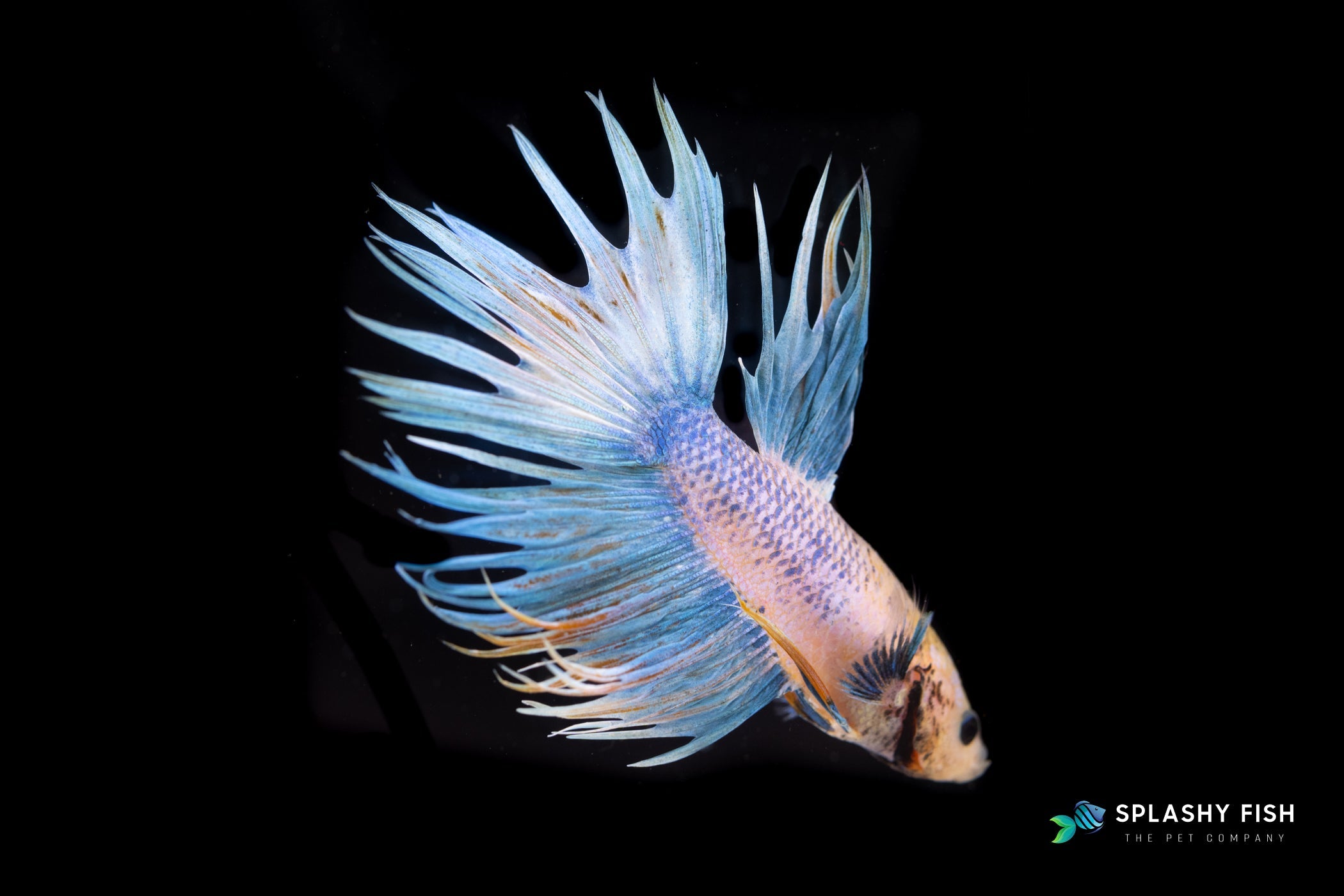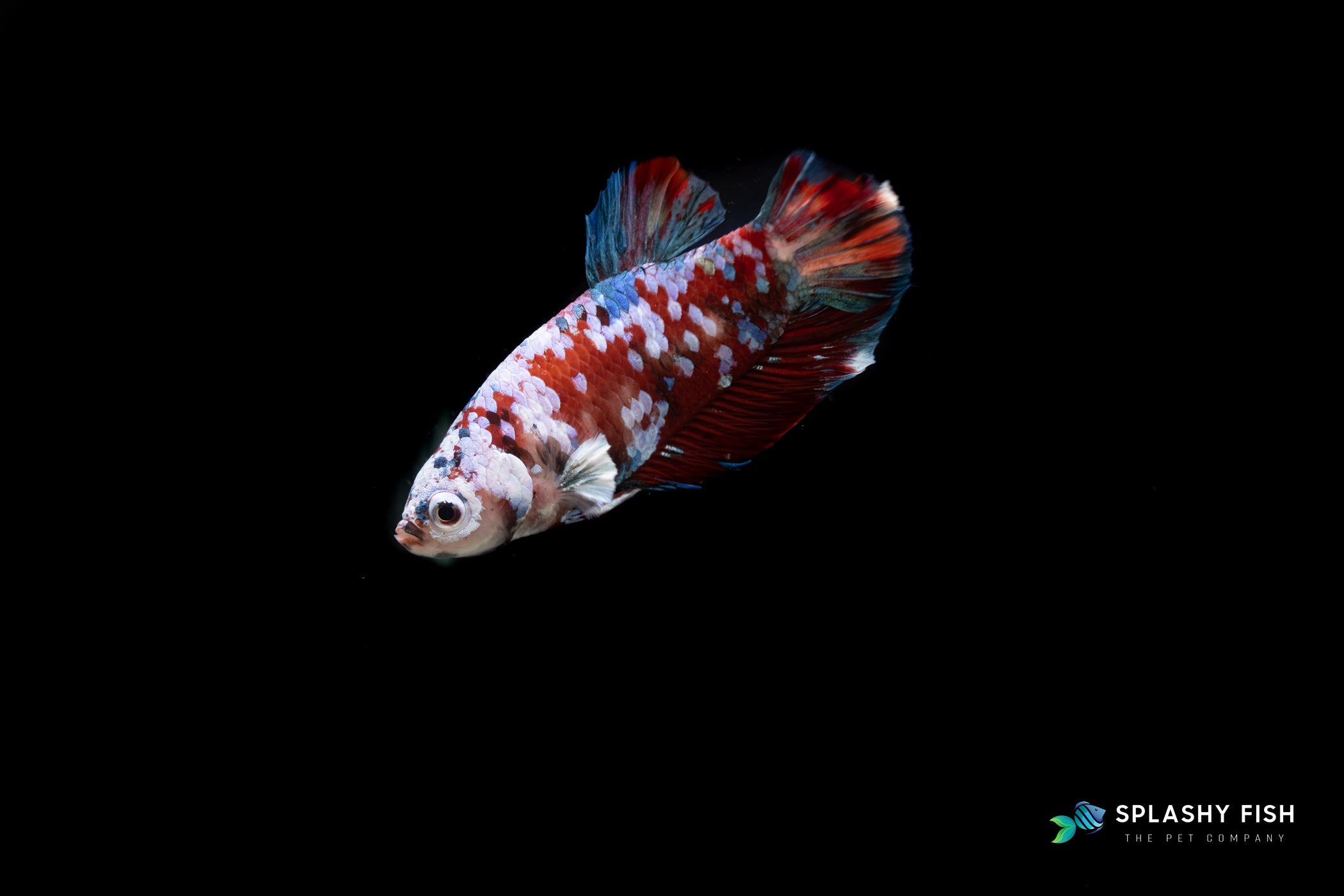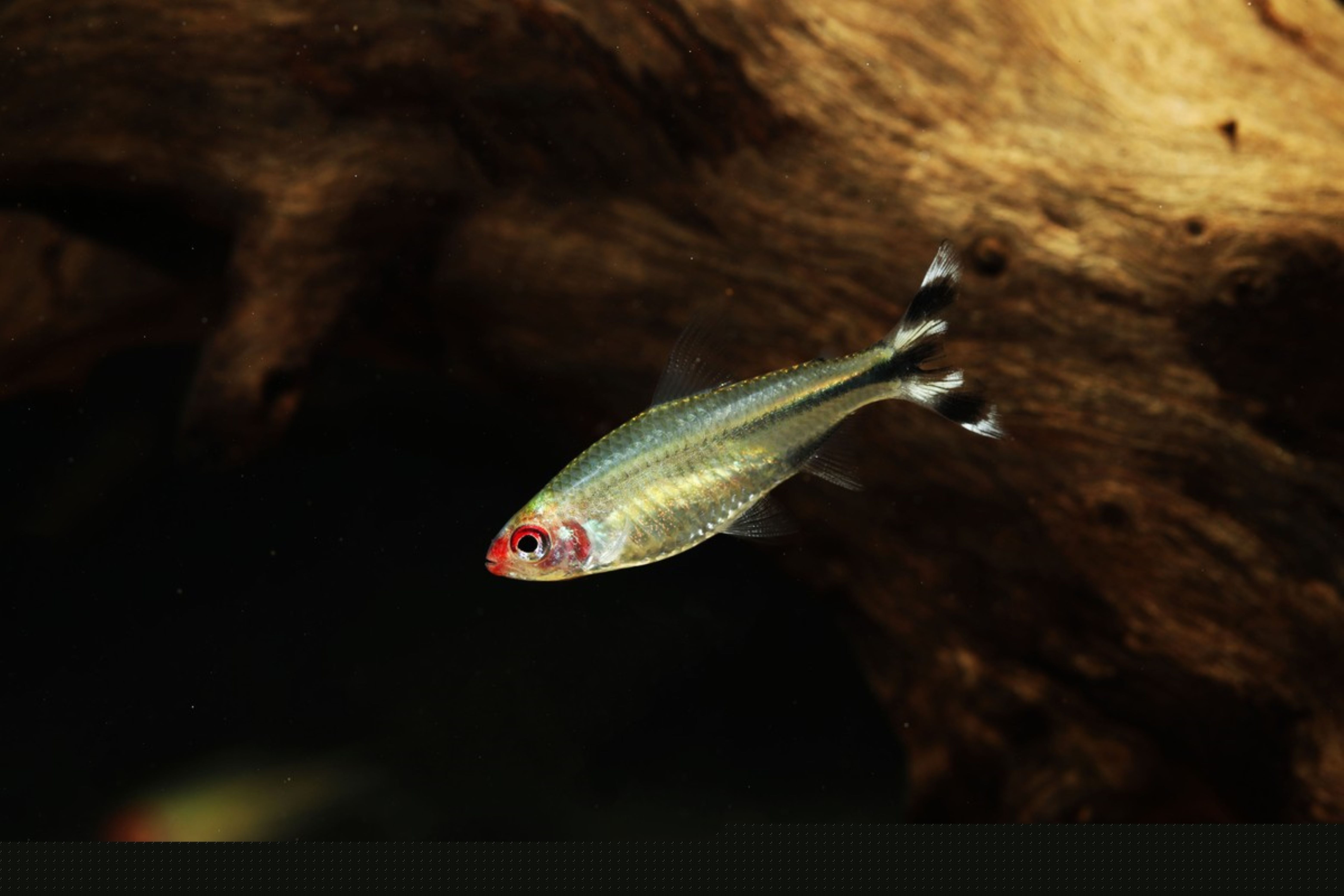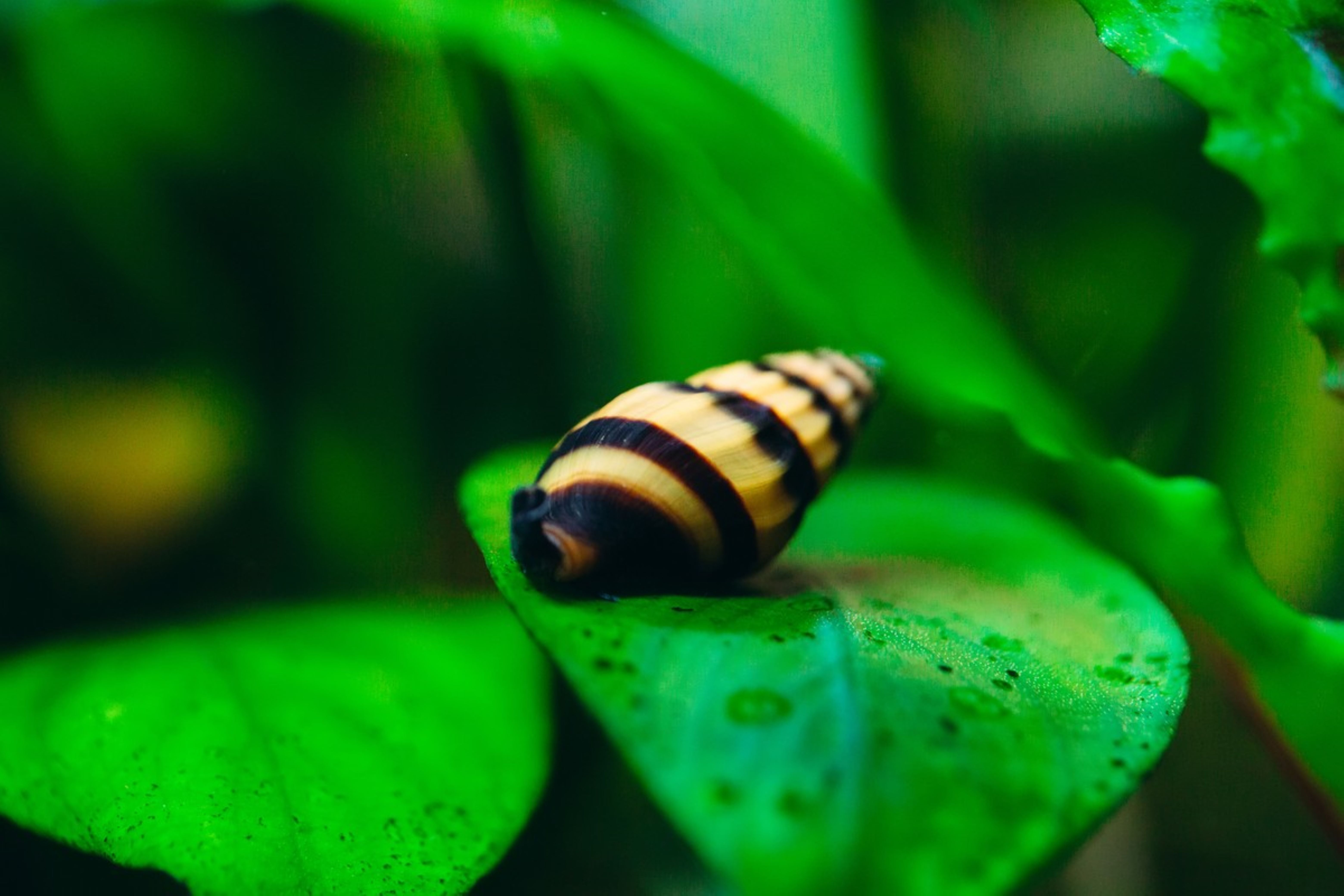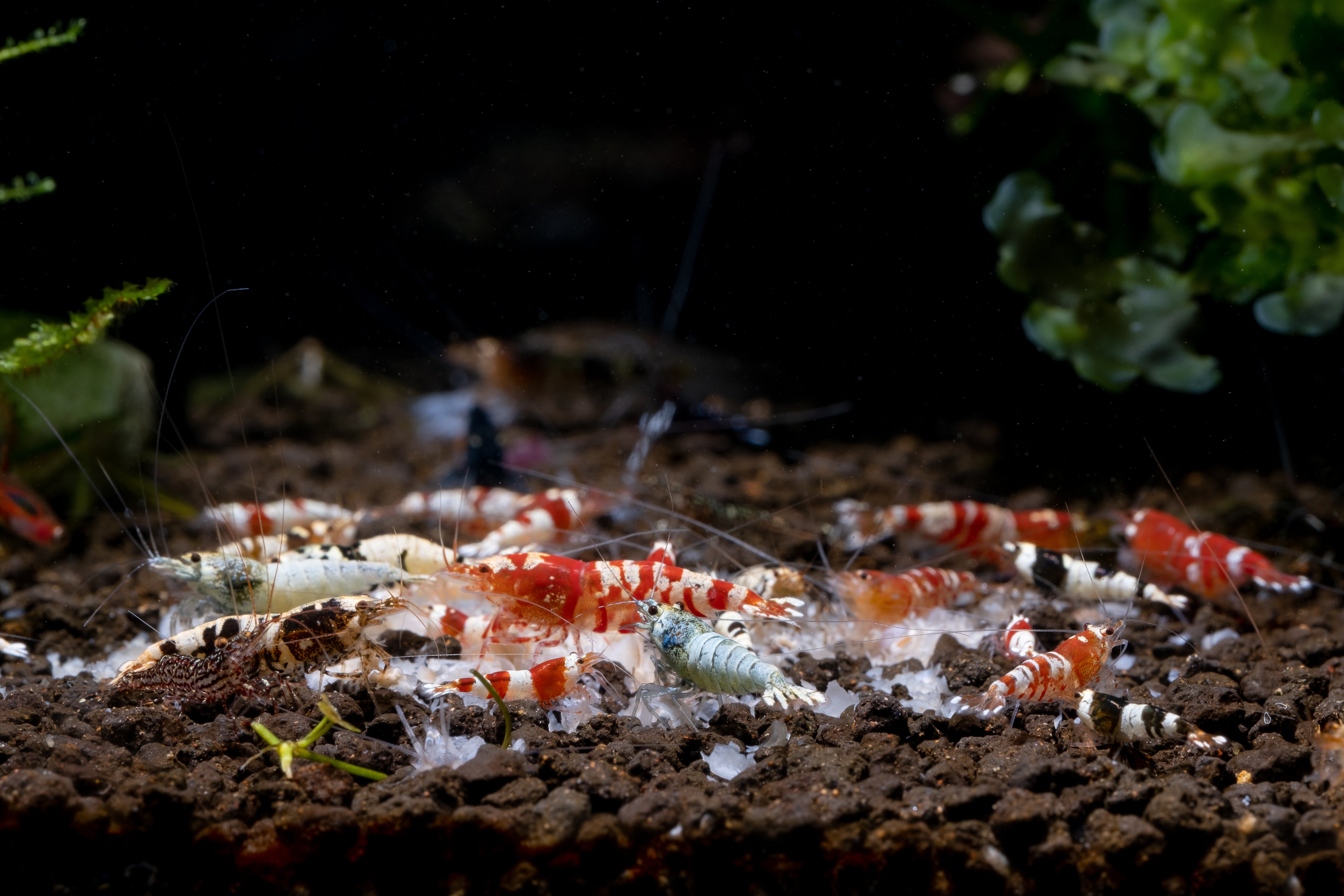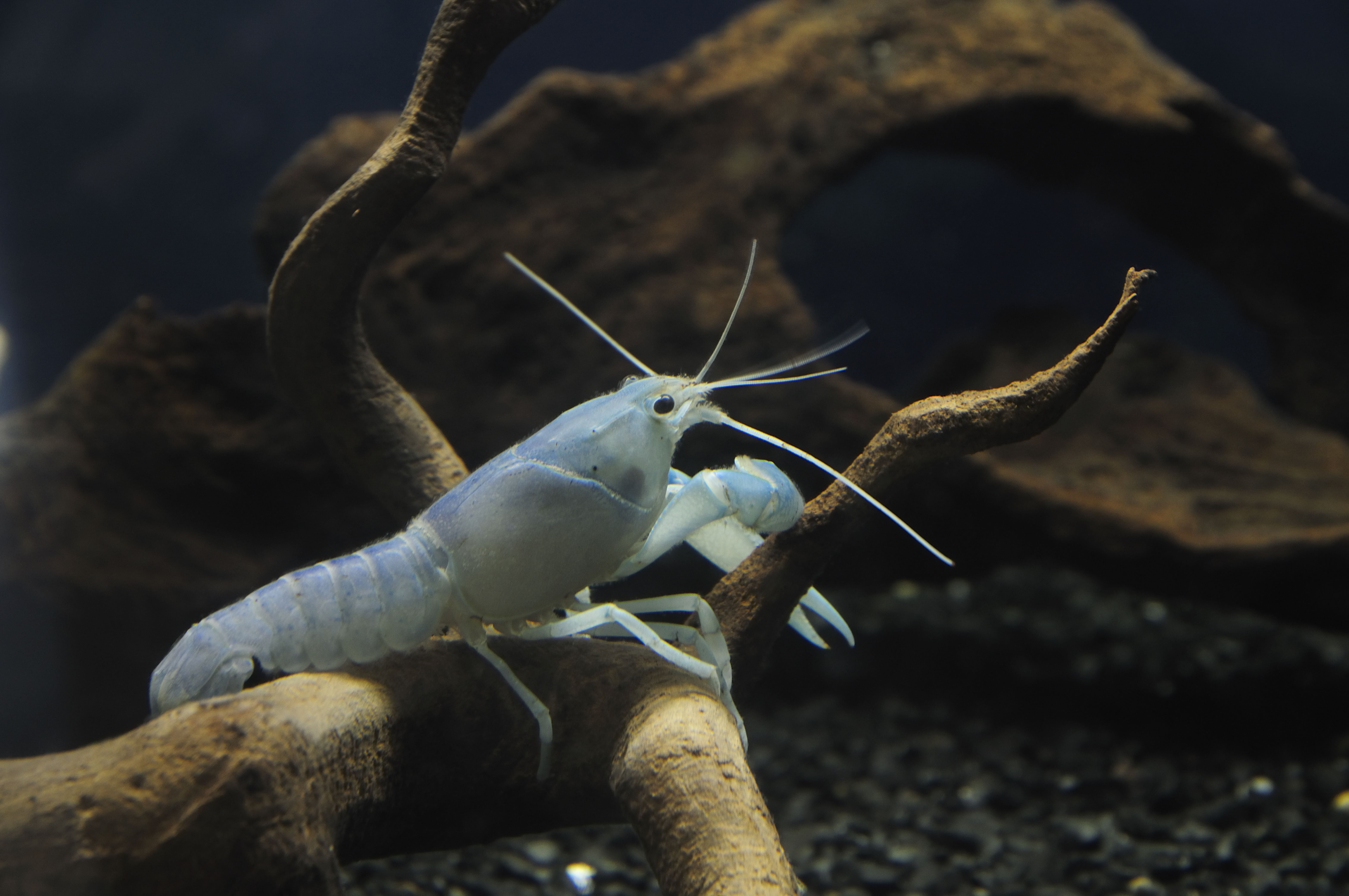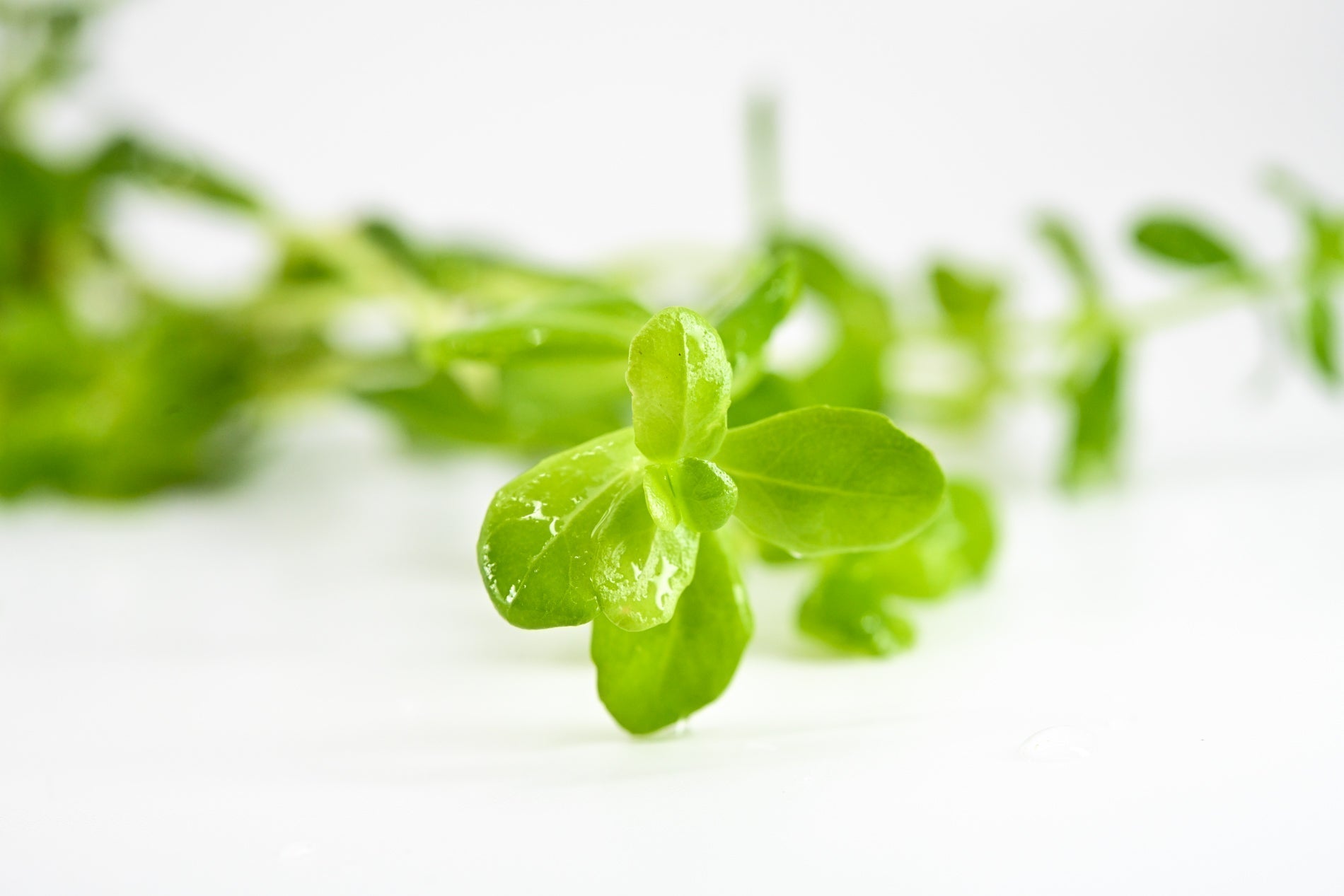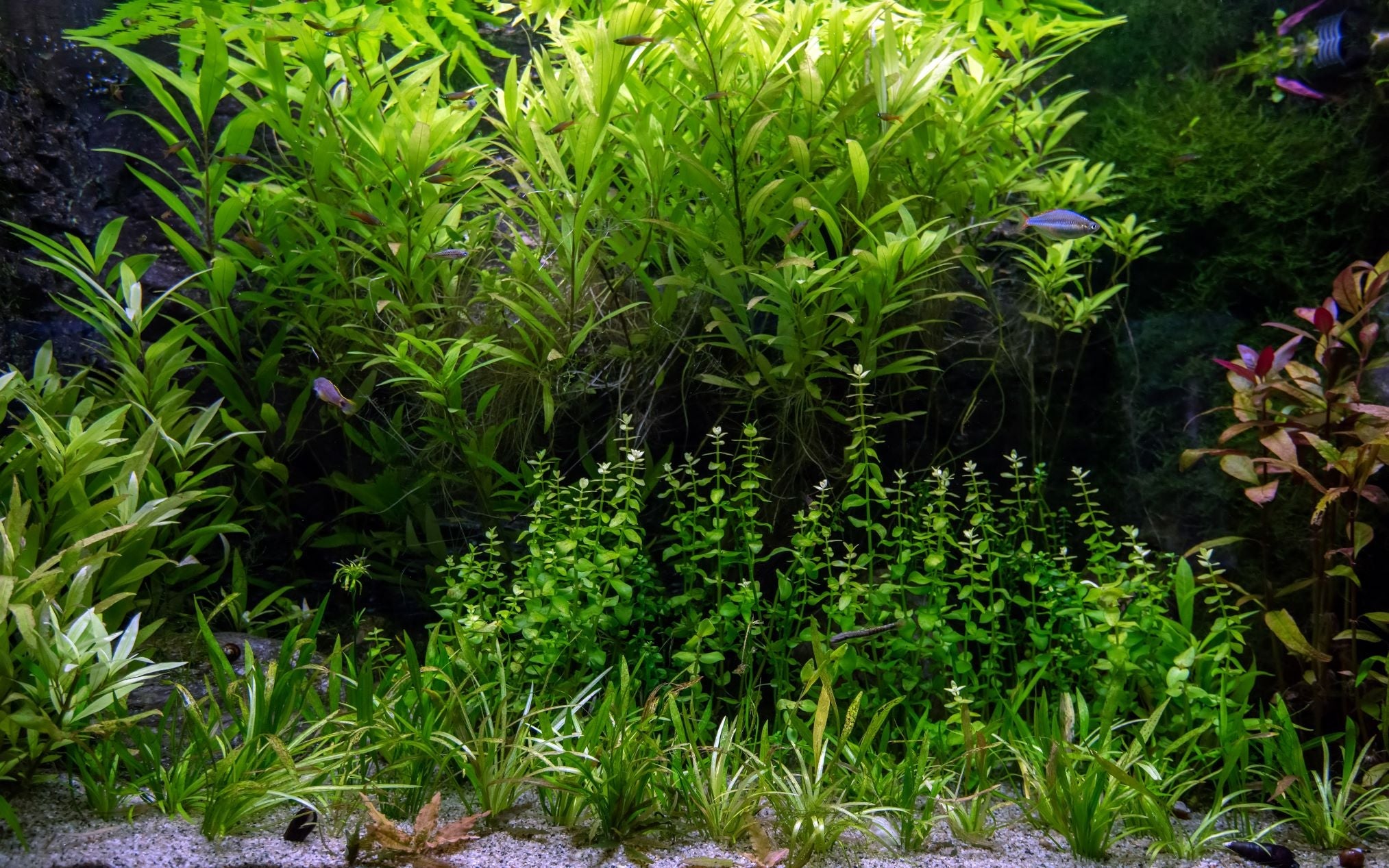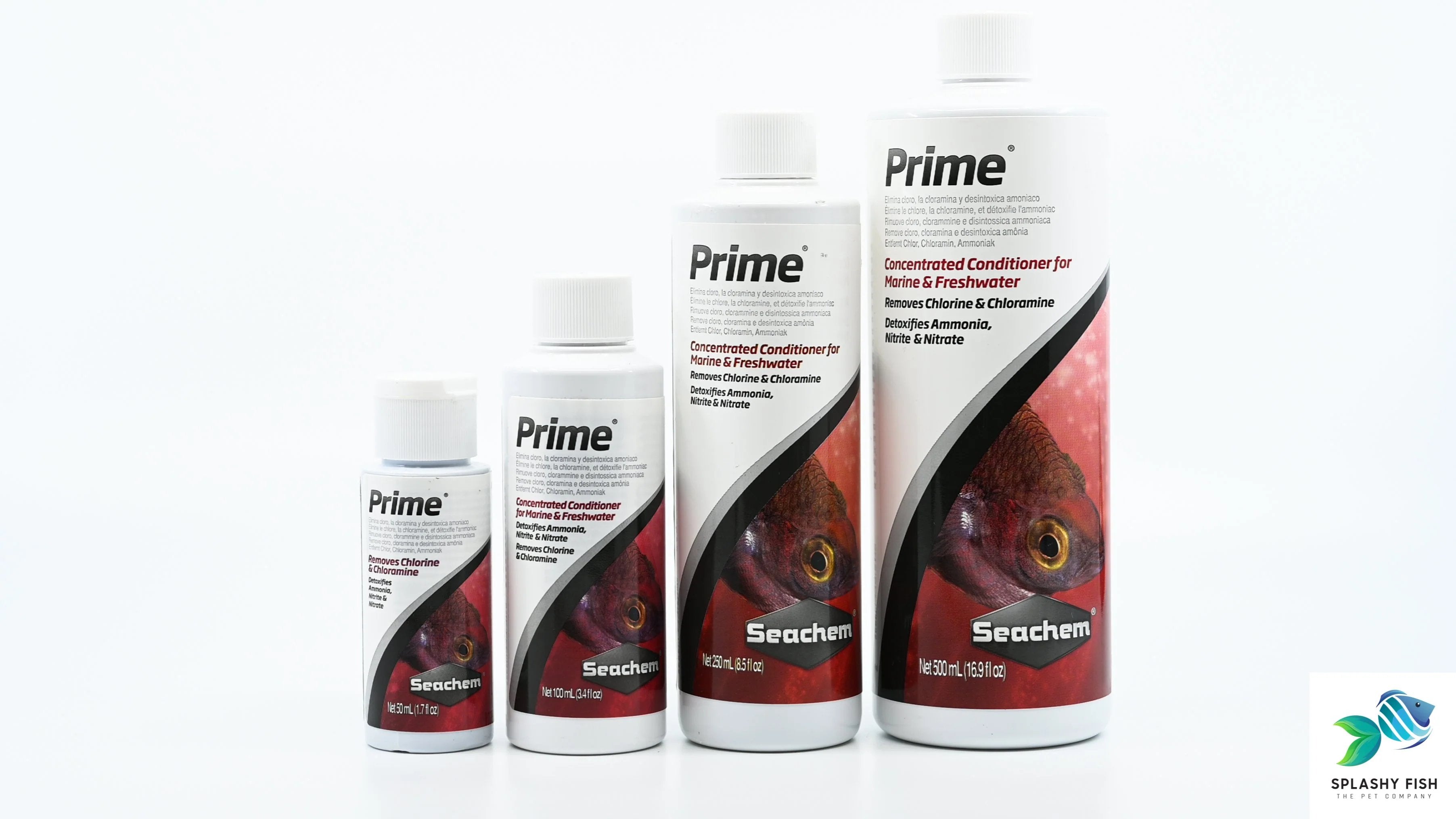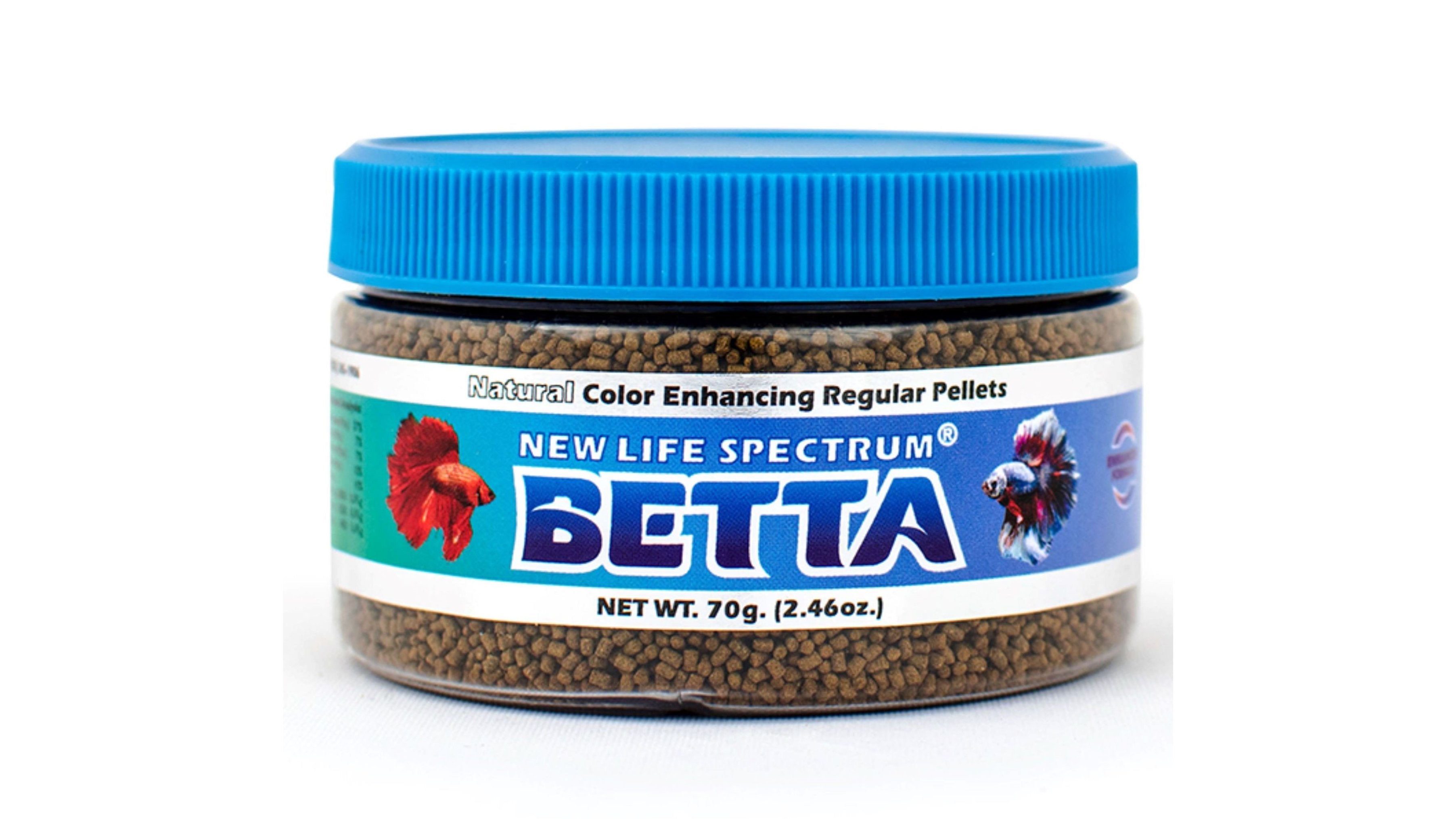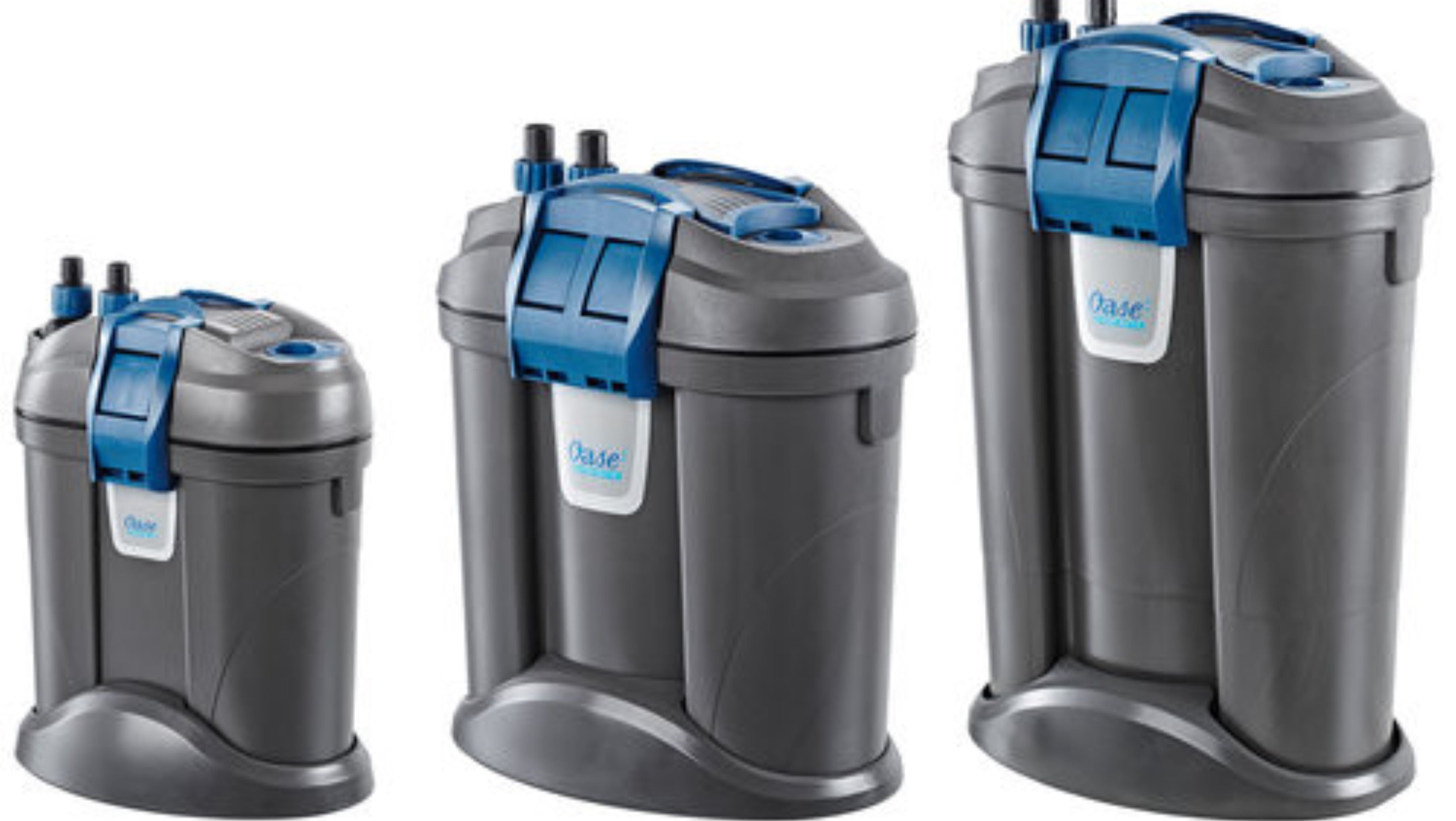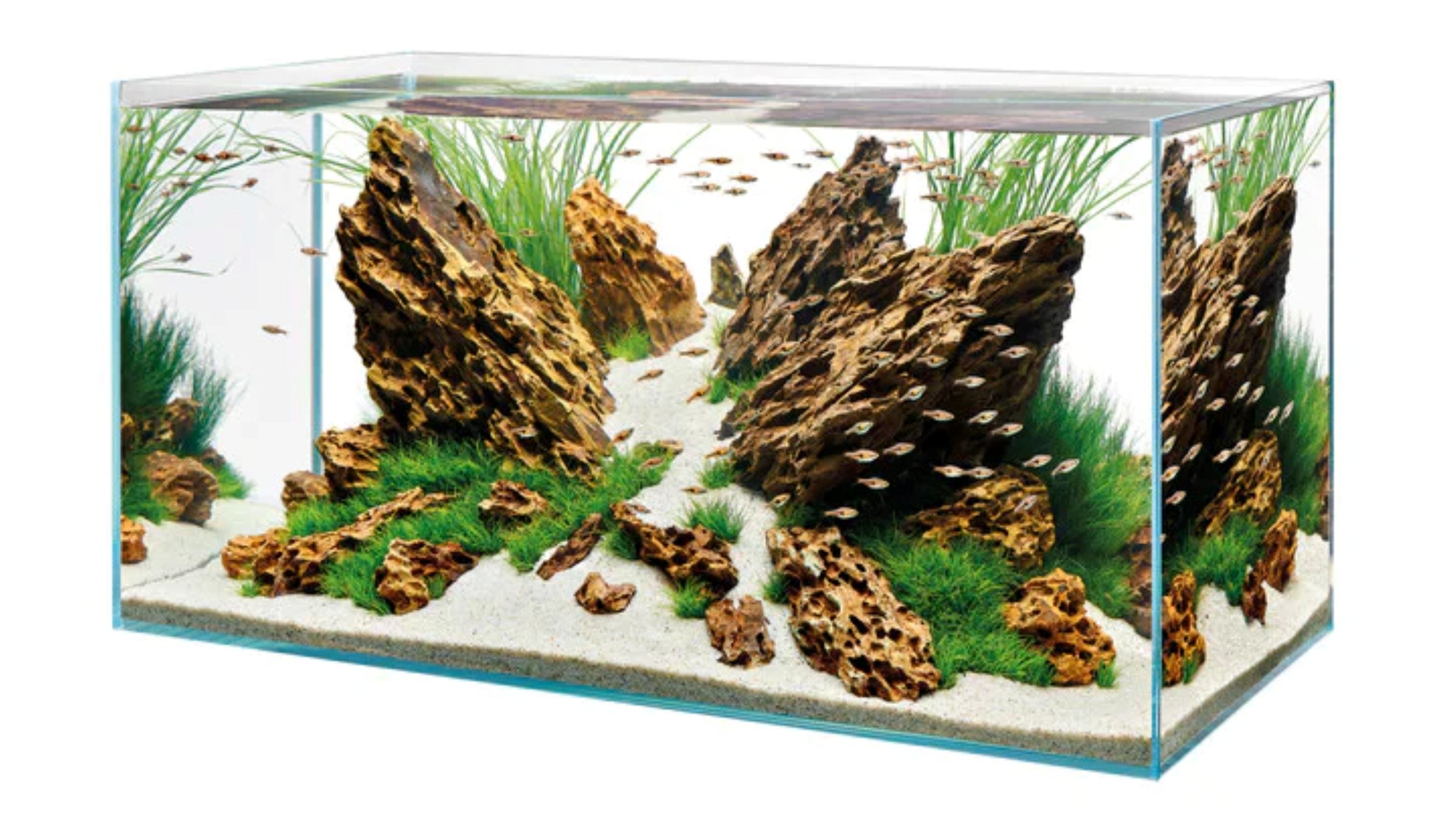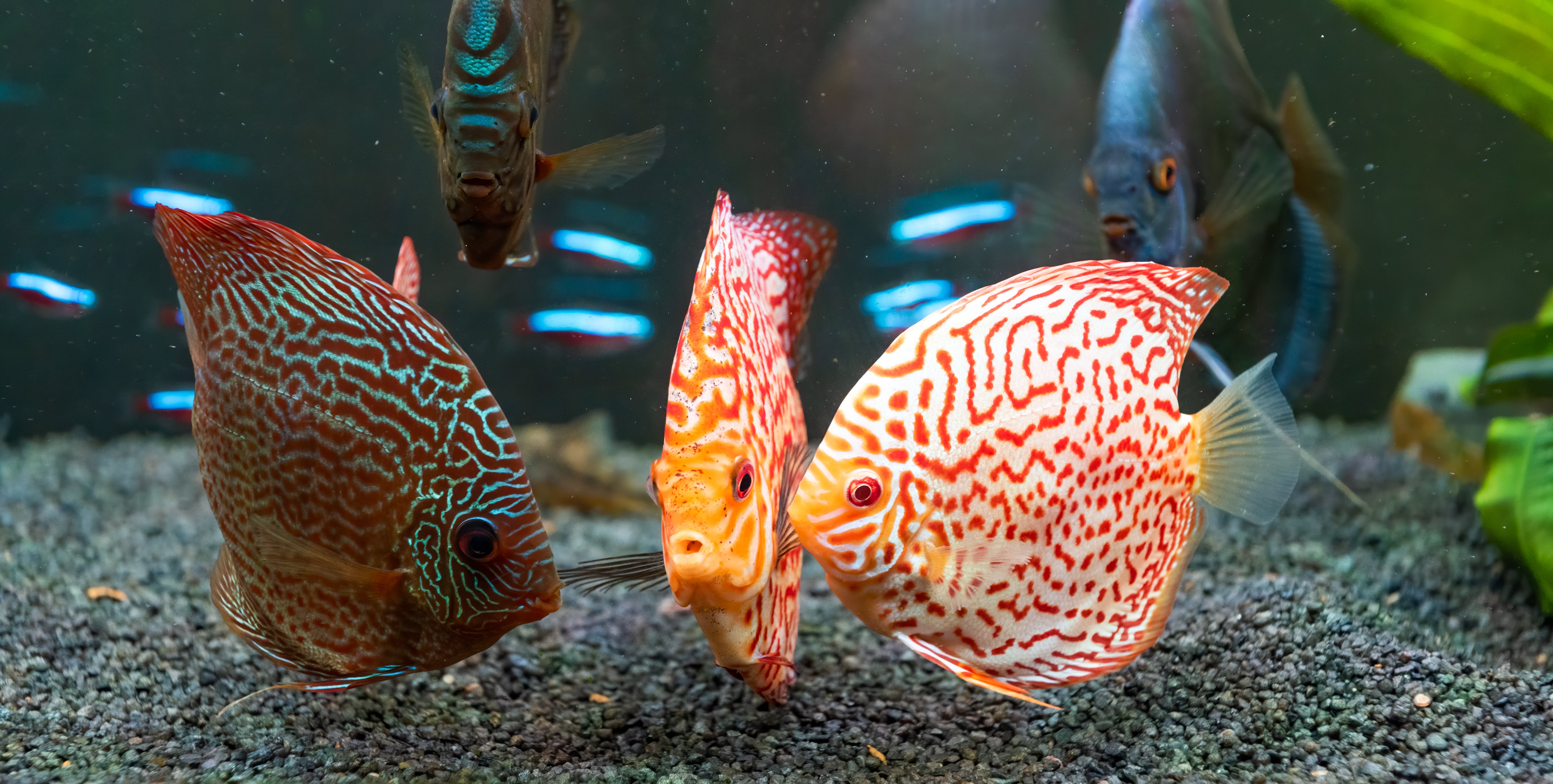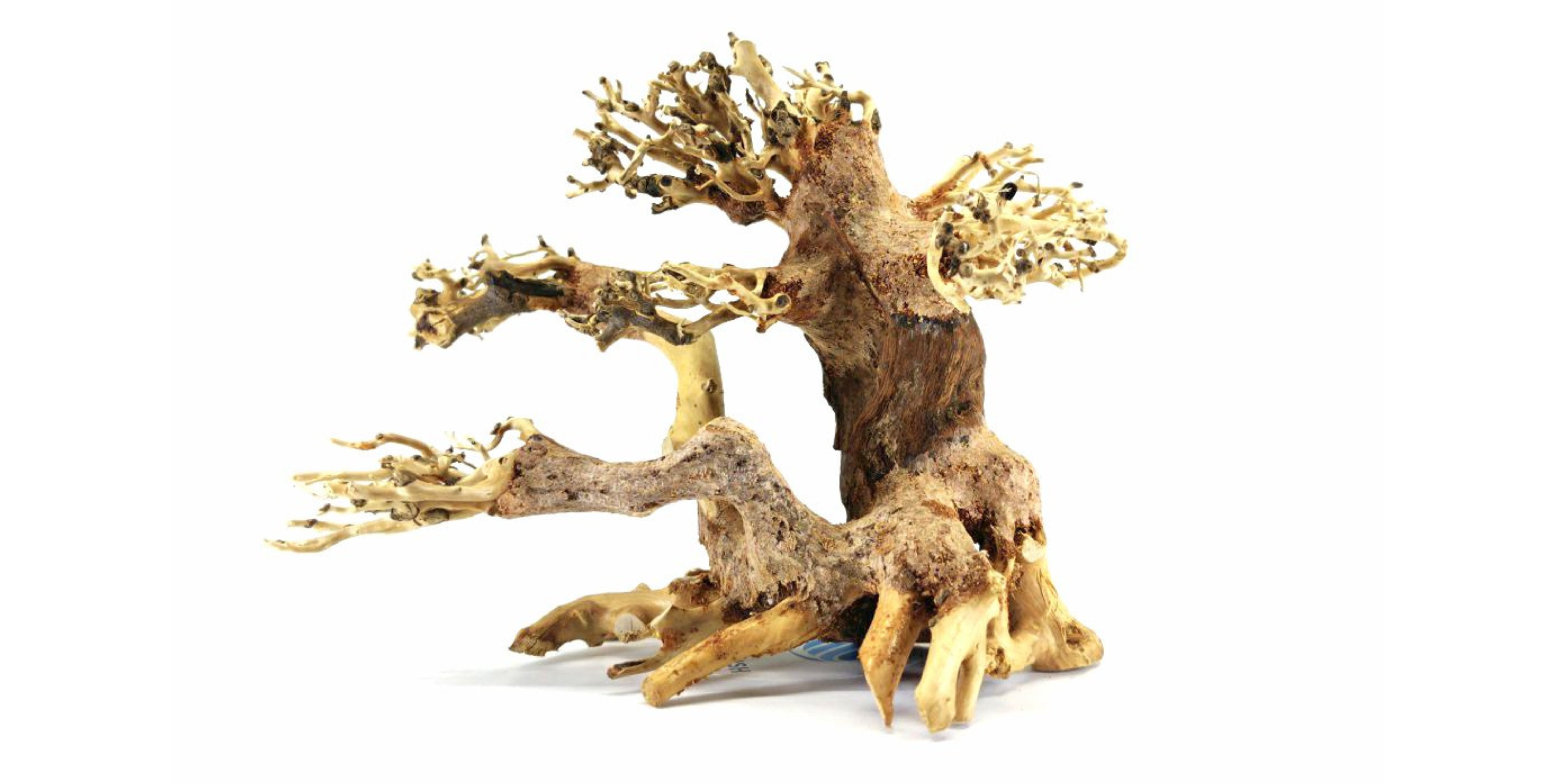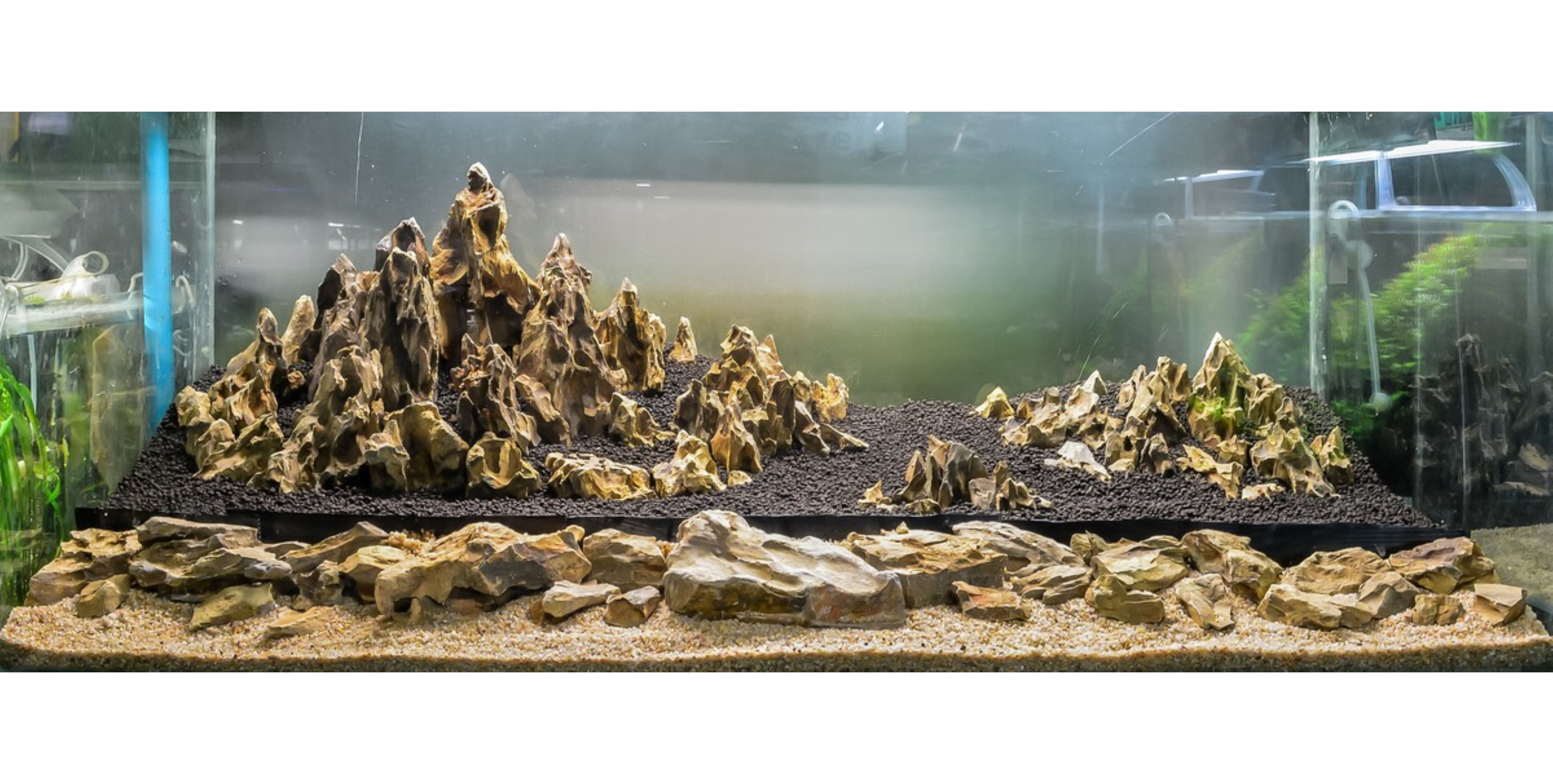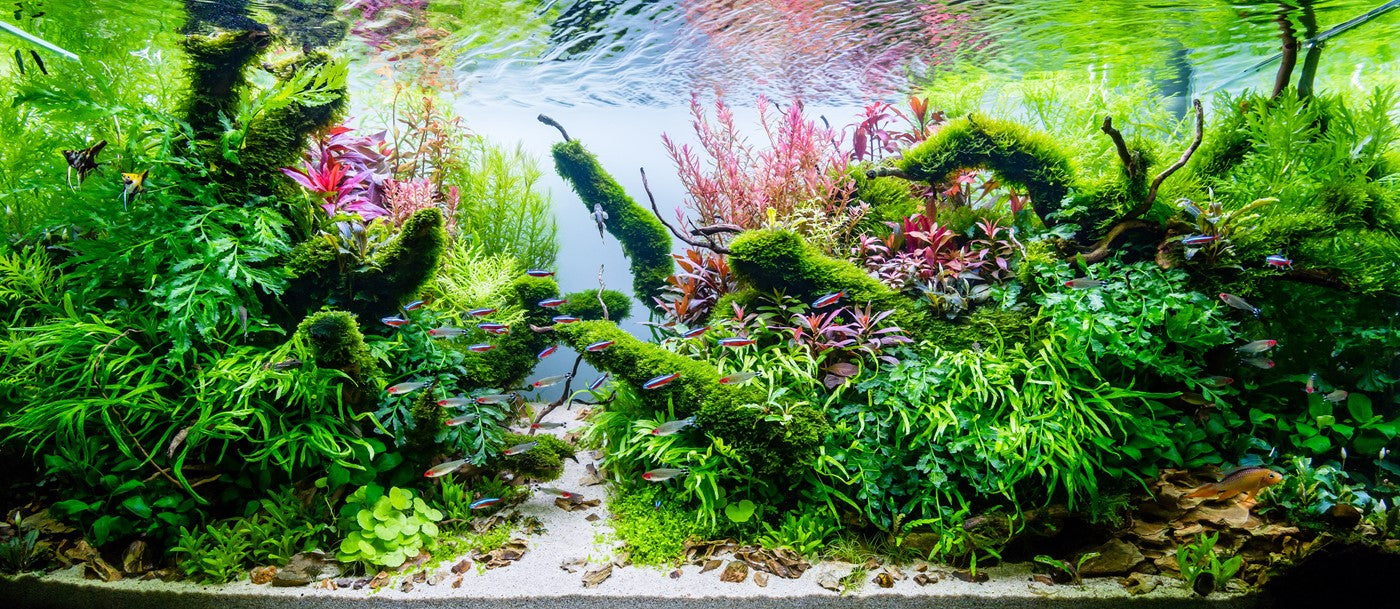Table of Contents
WHAT IS AQUARIUM TISSUE CULTURE PLANT? HOW IT BENEFIT YOUR TANK? HOW TO PLANT TISSUE CULTURE PLANTS IN THE AQUARIUM?
We believe some of you might have noticed the words ‘tissue culture’ when looking for your desired live aquatic plants. Have you ever wondered what the tissue culture plants are? Why are they always recommended in many fish stores? Is aquarium plant tissue culture that good? In this article, we will introduce you to the basic understanding of aquarium tissue-cultured plants and what benefits such special species offer to your tank as well as how to acclimatize plant TC properly to the home aquarium environment.

(Image of a cup of aquarium plant by Tropica tissue culture)
-
What is the tissue culture plant?
Tissue culture plants (or plant TC for short) refer to plants cultivated in a special technique which is different from the conventional ways. Simply explained, tissue culture plants are plants produced under sterile conditions (laboratory in general), and from the respective plant cells propagated on a culture medium. The method relies on the fact that many plant cells have the ability to regenerate a whole plant if nestled in a suitable media and environment.
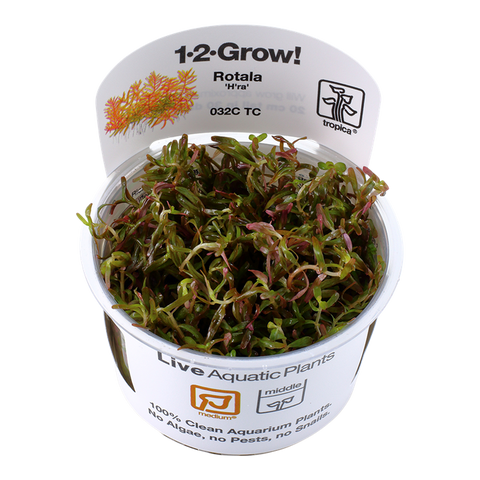
(Image of a sample of Rotala H'ra tissue culture plants by Tropica)
Plant tissue culture is not new to the plant-growing community since it has been being used for many purposes, among them:
- Mass production of commercial plants enlarging the approach of the consumer market;
- Cultivating the difficult-to-grow species which are hard to grow by other means;
- Conserving rare or endangered plant species;
- Promoting the successful rate of the cross-breeding/ regeneration process;
- Shortening the growing period; and
- More importantly, freeing the plants of viruses and diseases.
Application to aquarium plants and Benefit of aquarium tissue culture plants
For such, it is not strange if you often encounter tissue culture in the aquarium plant market, or in another name In Vitro plants. The title is given upon the specific cultivation technique applied to produce plant TC.
Many aquarists are fond of tissue culture plants for they allow them to be worry free about harmful ‘hitchhikers’, such as pest snails, algae spores, parasites, insect larvae, and pathogens. Further, plant TC is free from pesticides which are deemed toxic to fish tank conditions. These are the main reasons and also the biggest benefits that make plant TC superior to other plant forms. The list has not yet ended. One portion of tissue culture plant gets you quite a large number of small individual plants, benefiting you in both quantity and quality.
Appearance of aquarium tissue culture plants traded in the market
Traded aquatic plant TC often finds many plantlets laid in small cups sealed with a lid and nutrient medium at the bottom. This kind of package allows the aquarium plant tissue culture to remain sterilized during the sale, yet makes it look quite different from that of other traditional plant forms. Unless you do some advanced research about the live aquatic plants you are going to buy, you may hardly visualize the matured appearance of that plant if based upon only the look of specimen on sale and the description label.
(Image of Microsorum Pteropus 'Windelov' Tissue Culture and Microsorum Pteropus 'Windelov' in pot in comparison)
Caption: The potted sample resembles the grown-up Microsorum Pteropus 'Windelov' more than Microsorum Pteropus 'Windelov' tissue culture
In most cases, aquarium tissue culture plants have very small leaves and stems while the root system is disproportionately large or super tiny. Such peculiar growth is primarily caused by the medium used in the cup, the main nutrient source nurturing plant TC. That also explains why after a period of growing tissue culture plants in the fish tank, you may observe their figures not as exact as the original.
(Image of tissue culture rotala and matured rotala in comparison)
Caption: Rotala is the species that indicates clearly the differences (esp. the coloration) in the appearance of the young tissue culture plant form and the matured one in the aquarium.
It is understandable if you get a little bit confused between the two forms when first approaching. Nonetheless, the unusual look of plant TC should not be deemed as indications of poor quality of the affected plant or long storage or the age of the plants. To give such a judgment, one needs to rely on many other factors which will be discussed in the section below.
-
Common aquarium tissue culture plants
Nowadays, lots of aquarium plant factories apply plant tissue culture to grow or propagate aquatic plant species. On the shelf of most aquatic plant stores, you could easily encounter various tissue culture plants from the dwarf-sized plants (foreground plants) to those relatively large once fully matured (stem plants or background plants).
Although application of plant tissue culture is quite costly, the demand for aquarium plant TC has never cooled off. Moss and Crypts are often the choices of such techniques for their slow-growing nature. It allows the plants to survive well and longer in the cup environment, which is contrary to stem plants. Most stem plants appeared to be fast-growing aquatic plants. As such, if they are stored in the cup for a long time, the sterile conditions may not be guaranteed. Because the plants quickly outgrow the container cup, leading to the cup’s pop-off. That said, some rare stem plants are found in tissue culture form.
Rotala red is an excellent example for stem plants cultivated in tissue culture. The freshwater species highlight your fish tank with the vigorous red coloration in the background or side walls. If it is not the background plants you are looking for but fore- to midground species, there are still a load of options, among them, Anubias Nana and Micranthemum 'Monte Carlo'. While the former features the midground positions with its dark green variable foliage, the latter would score a point due to the carpeting effect and lush foreground shelters it brings to the fish and shrimp community.

(Image of tissue culture Anubias nana by Tropica)
Apart from the above, there are many common aquarium tissue culture plants for you to freely consider such as Cryptocoryne Parva, Staurogyne Repens, Alternanthera Reineckii Mini, and so on. Despite the relatively high price, the number of plantlets you get and the high quality the plant TC offers are really a worthwhile bargain.
-
How to plant aquarium tissue culture plants?

(Image of a tissue culture planted tank)
Planting tissue plants in the aquarium is quite similar to that applied to other plant forms. What makes it different lies in the preparation stage.
A cup of plant TC contains not only the plant but also the nutrient medium which is often found in gel or agar (or liquid despite rarity) form. The medium acts as a nutrient base providing the plants with necessary supplements for their optimal growth. Though nutrient medium is not harmful, removing it before planting tissue culture plants in the aquarium is required.
Step 1: Open the cup and take the tissue culture plants out. Rinse gently the plants until they get rid of the medium entirely.
Step 2: Carefully separate the clump into several plantlets and acclimatize them to the tank.
Step 3: Use the planting method recommended for each specific aquatic plant species to plant your corresponding tissue culture plants. For more information, you could refer to our article How to plant live aquarium plants.
During the first couple of days after planting, you should regularly observe the plants to promptly find any unusual signs and treat them. If you notice your aquarium tissue culture doing well, congratulations, they have successfully adapted to their new environment and are ready to take a new journey.
Remember that tissue-cultured plants are more delicate than traditional plant forms which requires you to handle them with patience and care. If you get quite a lot of plantlets in one cup that you cannot plant them all at once, you could place the temporarily unused specimens in a tray filled with water to keep them moist, while planting the other.
Do I need to quarantine aquarium tissue culture plants?
Unlike potted aquatic plants, tissue culture plants are grown free of harmful pests, chemical substances and diseases. Since the purpose of quarantine is to ensure no hazardous objects penetrate your aquarium via the introduction of new plants, which are unlikely to be found in tissue culture, you do not need to quarantine your tissue culture plant TC before putting them into the fish tank.
However, if the container cup of plant TC you received is not in good order, for example, damaged, opened, unsealed, it means the sterile environment is no longer available. For such cases (if you don’t return), before introducing, you cannot avoid the quarantine process.
(Image of a damaged cup of plant TC)
Can I introduce plant TC in a(n) new/ uncycled aquarium?
Definitely no. Plant TC is more delicate than traditional plant forms and prone to common plant problems. Even with well-established/ well-cycled aquariums, plant TC requires more attention at the beginning stages. This is primarily due to the method of plant tissue culture. It benefits the plant by providing it with a good environment to grow, yet accidentally hinders its immune system from developing and strengthening by coping with common plant problems.
I find that not all plant TC cups are in the similar conditions. How come?
This is actually a common situation. You may find the cups all containing the same plant but their conditions look not quite alike. Some could be found fresh, some brown leaves, some whitish medium, some even have plants pushed in one side. The reason to explain all of the situations is somehow related to the storage and shipping.
(Image of a cup of plant TC that is disordered due to bumpy shipping)
Aquarium tissue culture plant cups can be shaken during the bumpy shipping, which leads the plants to be disordered. For example, the medium could cover all the plants themselves instead of only their roots, or plants could be compressed on one side of the cup or in a ball. Such are not a big deal as long as the cup is still sealed and no liquid or medium leaks out, as this means the sterile conditions have been maintained during the delivery. What you need to do before planting is paying double attention and care to remove entirely the medium that is found in not only the roots but the whole plant’s parts as well. However, if things are different, subject to the specific cases, you have no choice but claim a return or quarantine the plant before use.
So, what are the specific cases we are mentioning here?
Brown coloration in plants and/or culture medium
Brown coloration tells many things about the plant’s health. If you observe the brown (such color may even be darker and highly likely turn black) in roots, leaves, and even the medium, it indicates the cup has been sitting on the shelf for a long time and no longer appropriate for use. Even if there are the green parts here and there in that cup, the chance of transitioning smoothly and successfully in the tank is diminished.
(Image of the cup with the above situation)
Sometimes, the situation is not that worse. Brown hues do appear at the bottom, indicating the fall of old or dead leaves. Despite that, if you find most of the other parts of plant TC are green and grow vigorously, and the medium isn’t affected much by the brown leaves, the plant could be acclimatized and thrive successfully in aquariums. The brown color likely just tells you one thing that the container cup might have been sitting on the shelf for quite a long time and all. It does not confirm or give any affirmative conclusion about the quality of aquarium tissue culture plants. Leaves fall is a part of natural growth. In other plant forms, i.e., potted plants, you hardly notice it thanks to outside factors such as microorganism, wind blowing leaves away. In sterile cups, things do not happen that way. It is a closed space, hence old leaves cannot get out of the cup but stay. In addition, the lack of necessary microorganisms supporting the decay of those leaves makes them stick to the medium and turn brown.
(Image of the cup having brown leaves yet still appropriate for use)
Useful notes: Brown leaves at the bottom of the cup probably happens in slow-growing tissue plants on most occasions. This is because these cups take quite a long cultivation period at plant tissue factories before they meet the standard required for sale. Hence, though the plants are placed on the shelf just in a short period, they could be mistaken for old tissue-cultured plants.
For the case, when planting, you should remove the dead (brown) parts together with medium and plant the green in your tank.
Faded/ light yellow leaves at the bottom of plant TC
This phenomenon appears mostly in stem plants tissue culture which are densely packed. The packing condition makes the light hardy penetrate the lower parts of plant TC, resulting in degradation of chlorophyll over time. Handling such affected plants is fairly simple. You don’t need to remove the faded leaves before planting. Instead, let them acclimatize and wait patiently for new chlorophyll to form under the proper lighting conditions in your tank.
(Image of the cup containing faded or light-yellow leaves)
Whitish fungus or mold
Indicators such as white patches on the top of the medium, black spots found here and there in the medium are clearly shown that the cup has unwanted guests. The causes could be varied, for example, carelessness during cultivation period or bumpy delivery which make the sterile environment no longer exist.
(Image of the cup infected with fungus or mold)
For whatever reasons, we don’t think such tissue culture plants are appropriate to use as the chances of successful growth are not high. It has not yet mentioned that the acclimation of these plants may cause harm to the fish community in the tank.
Which tissue culture cup should I choose?
Those are not damaged, opened and contain the fresh-looking plants with white and not over-crowded roots, no sign of mold or fungus.
Indeed, the main purpose of the section is to help you choose the tissue culture plants that have the high chances of successful transitioning and growing in the aquarium environment. Further, given the relatively high price of tissue culture products, the more plantlets are used up, the more bargain you gain. Therefore, if you are totally new to plant tissue culture, we recommend you follow the above guidance to mitigate the risks.
-
How to store aquarium plants before planting?
Plans do not always proceed as you wished, so is the plan of planting aquarium tissue culture plants. Fortunately, you can delay doing it for a couple of days as long as you store plant TC properly.
Note: Despite the fact, we recommend the storage period should be within 3 to 4 days and no longer. This is because you don’t have the proper facilities to keep the plants for a long time while allowing them to be fresh and grow healthily
- Immediately check the container cups if they are damaged, leaked, or in sealed conditions or not. If they are, this means the plants have not been under sterile conditions anymore, and you either return or proceed with the planting at once to mitigate the failure.
- If the cups are in the right order and conditions, you then consider the proper locations for the storage. Ensure that two following factors must be met: cool temperature not exceeding 20°C and bright (not too strong) light access. This allows the normal growth of plant TC as well as enhances the possibility of successful acclimation.
Refrigerators should not be one of the options as the temperature therein is often around 8°C or lower, inappropriate for the normal growth of plant TC. In addition, light is nearly impossible to access there, which could negatively impact and cause poor conditions to the plants.
Ideally, you should store the aquarium tissue culture plant cups under bright to moderate lighting and in an air-conditioned room.
How long plant TC will stay alive?
The answer is it depends on the plant species. Slow-growing plants like Cryptocoryne or Moss stay longer than fast-growing aquatic plants as they consume the nutrients slower and hence develop slowly. Generally, slow-growing tissue culture plants could live for several weeks in the cups.
Fast-growing plants such as stem plants are in contrast. Like its name, their growth rate is rapid, sometimes making them outgrow the container cups. Hence, it is highly recommended planting fast-growing tissue plants as soon as possible.
In conclusion, tissue culture plants are really worth your try. And we believe once you get familiar with the kind of plants, you find it more than the joy and pleasure but pride as you have successfully grown and maintained them. Our article plays no role but help you acquire certain basic information to avoid beginner mistakes.
Aquarium plant hobby should be a joyful journey rather than a concern. And, Splashy Fish Store is happy if the above information could help you achieve that. We also supply a wide range of aquarium tissue culture plants which come from reliable tissue plant factories. We further guarantee that all of our tissue culture plants will be handled with care during package and shipping and survive transport as undamaged as possible. We care about the quality and strive to provide you the best we can. Visit our store to find what surprise is waiting for you.
FAQS ABOUT AQUARIUM TISSUE CULTURE PLANTS
I have once heard of the shelf life of aquarium tissue culture plants. What does shelf life mean? Is it important to notice while considering the cups of plant TC?
Shelf life refers to the period that tissue culture plants are displayed on the shelf for sale. It is normally several months if properly maintained. Although it could be understood as the expiry date, we like to consider it as the period that if plant TC is planted in an aquarium within such time, it can adapt easily and grow healthily later. Those having a long shelf life may face more difficulties to adjust to the new environment, and could end up with large parts being removed.
How long does it take to produce tissue culture plants?
With all the advantages conditions plant tissue culture offer, it is not strange if the production time of plant TC is shorter than other plant cultivation forms. In general, aquarium tissue culture plants can reach cultivation times of up to six weeks in the laboratory before they have to be transplanted into fresh medium.
Is it difficult to plant tissue culture plants in the aquarium?
Not at all, after removing the medium totally, you could plant it in the way applied to traditional plant forms. See our instructions in section 3 above for more information.
Tissue culture plants or potted plants?
Each one has its own pros and cons and the right choice sometimes needs taking several factors into consideration. Below are some key points regarding the benefits and disadvantages of aquarium tissue culture plants that we believe by learning them, you could easily have your own decision.
Benefits:
- First and superior benefit is the plants are free from pests, algae, and harmful chemical substances, which are usually unsure when it comes to potted plants. This factor helps exclude the quarantine process that is often applied to potted plants.
- Many plantlets per cup, which makes the price for tissue culture plants relatively competitive.
- The plants could grow faster compared to that of potted plants once they adapt well in the aquarium environment.
Disadvantages:
- Less robust than large-sized plants. This is mainly because such plants get accustomed to the natural environment which allows them to learn and face the risks affecting their health conditions. Plant TC is otherwise.
- Require the aquarists to have more patience and care while acclimatizing them.
- Those aquarium plant hobbyists who are new to tissue culture plants could find it difficult to recognize good/ fresh samples of tissue cups.


